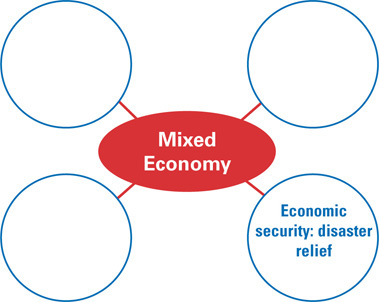Chapter 2 Assessment
Chapter Summary
A summary of the major ideas in Chapter 2 appears below. See also the Guide to the Essentials of Economics, which provides additional review and test practice of key concepts in Chapter 2.
-
Section 1 Answering the Three Economic Questions (pp. 23–27)
The three basic economic questions societies ask are (1) What goods and services should be produced? (2) How should these goods and services be produced? and (3) Who consumes these goods and services? An economic system is the way a society decides to answer these three economic questions. There are four general types of economic systems: traditional economies, market economies, centrally planned (or command) economies, and mixed economies.
-
Section 2 The Free Market (pp. 28–32)
A free market is a self-regulating economic system powered by individuals acting in their own self-interest. In a free market economy, the factors of production are privately owned, and individuals decide how to answer the three economic questions.
-
Section 3 Centrally Planned Economies (pp. 34–38)
In a centrally planned economy the central government controls the factors of production and answers the three basic economic questions for all of society. Two systems often mentioned when centrally planned economies are discussed are socialism and communism.
-
Section 4 Modern Economies (pp. 40–44)
Most of the economic systems in the world today are mixed economies. These systems use a combination of government involvement and free markets. Throughout the world there are different levels of government intervention in mixed economies.
Key Terms
Match the following terms with the definitions listed below. You will not use all of the terms.
- competition
- socialism
- mixed economy
- self-interest
- command economy
- laissez faire
- privatize
- consumer sovereignty
- market economy
- System that combines the free market with some government intervention
- One's own personal gain
- The doctrine that states that government generally should not intervene in the marketplace
- System in which the central government makes all decisions on the production and consumption of goods and services
- The struggle among producers for the dollars of consumers
- System in which decisions on production and consumption of goods and services are based entirely on exchange, or trade
Using Graphic Organizers
-
On a separate sheet of paper, copy the web map below showing the advantages and values of a mixed economy. Complete the web map with examples from your knowledge or experience.





